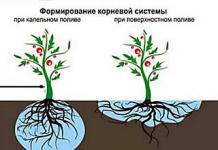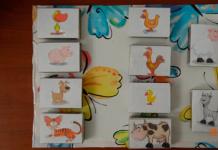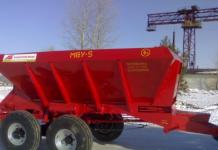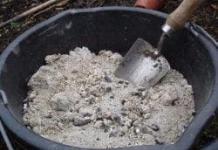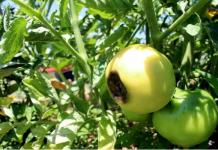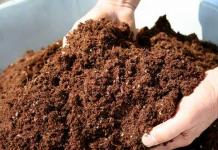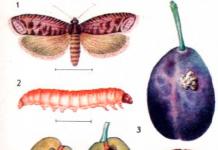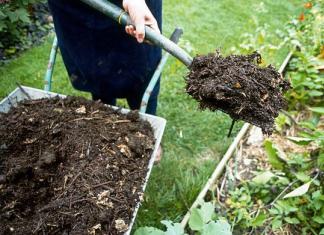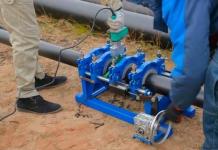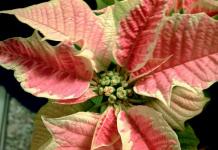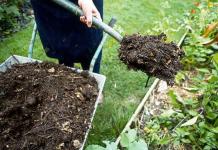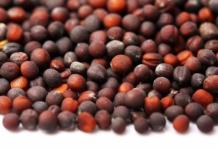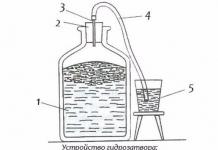In winter, the beautiful poinsettia, the Christmas star, appears on the shelves of flower shops. Today we’ll talk about care at home, because many people, after purchasing, simply don’t know what to do next with the flower, and as a result, the plant often dies.
Poinsettia beautiful or Star of Bethlehem is a tropical plant of the Euphorbiaceae family. It is also called the most beautiful euphorbia. In the wild, the lovely bushes reach gigantic sizes, growing up to three meters in height.
Although the plant blooms with inconspicuous flowers, it has become a symbol of the Christmas and New Year holidays due to its bracts, brightly colored red. Winter flowering has made the plant very popular in Russia, where there is a lack of rich colors at this time.
How to grow poinsettia at home
The plant looks beautiful on the windowsill against the backdrop of snow-covered trees; you can see the beauty for four whole months. Moreover, poinsettias with leaves of pink, burgundy, and white colors have now been bred.
A properly grown, well-groomed and timely pruned plant will bloom once a year. Many people complain after purchase that the flower quickly loses its decorative effect, sometimes along with the leaves. Below we will look at why this happens. Now we’ll find out in more detail what to do with the plant so that it becomes a decoration and not a cause of headache.
Poinsettia, how to care, photo
Some people find caring for tropical miniature shrubs very difficult. Some even throw away the flower when it begins to shed its leaves, thinking that it is dead. You just need to know a few features when growing poinsettias. Then you can easily achieve annual flowering and even propagate the plant.
What to do with poinsettia after purchase
We usually buy a flower in winter, at the beginning of its flowering. All plants are sold in special transport soil and small pots. This soil is very poor in composition for a flowering plant. But, precisely because during such a period you cannot touch the flower, we do not replant it, do not prune it, or do any such actions at all.
A plant brought from the store just needs to be placed on a bright windowsill in a cool room, just don’t create a draft.
Most likely, as the poinsettia fades, it will shed its foliage, which will affect the quality of the soil and the change in microclimate. But you shouldn’t be afraid of this; later it will begin to produce new shoots and bloom.
I want to talk a little about choosing a flower. First of all, look deep into the bracts, where the flowers are. We need to assess their condition, they should not be completely open to the stamens, do not buy a plant with already wrinkled, dried flowers, which means the plant has already faded.
We look at the condition of the shoots; they should be evenly colored, without stains and sit tightly in the ground.
Lighting for poinsettias
Tropical plant of short color day. That is, poinsettia blooms only in winter, when it starts to get dark early here. Many people do not know this feature and turn on bright lighting next to the flower, thus confusing it.
In normal mode, the flower needs bright light, but not in direct sunlight, otherwise all the decorative effect will go away and the flower may even get burned.
Most often, the plant is placed on south-eastern windows so that it has enough light and is illuminated with lamps. At the same time, you need to remember that they cannot artificially increase daylight hours, otherwise they will not bloom.
Temperature
During the flowering period, we reduce the temperature to +14 - +18, the main thing is not lower than +12. At normal times, you can keep it at +18 - +24, but under no circumstances overheat the flower.
Poinsettia reacts sharply to sudden temperature changes and may even shed its foliage and refuse to bloom at all.
When the poinsettia fades and “goes into hibernation,” the temperature and lighting should be reduced. You can move it to a cool, shaded room.
Watering
The plant is very afraid of dampness; overwatering is worse for it than a jump in temperature. You cannot have a strict watering regime, for example, twice a week. Humidity and temperature conditions are different at each time of the year. And a lot depends on the composition of the soil, one dries out faster, the other retains moisture longer.
Before watering your poinsettia, check the soil by digging your fingers into the pot as far as possible. At a depth of two centimeters, the soil is still wet, we cancel watering and wait until it dries completely.
Water the plant with slightly warm water, always filtered or melted. It is better to water from a watering can or a teapot with a spout. We pour water until it begins to seep into the pan. Then we pour out the excess from the pan.
Feeding
Poinsettia blooms during the winter, its dormant period begins in the spring. Therefore, it is necessary to feed it in the same way as other winter-flowering plants, for example.
We start fertilizing in May and apply fertilizers once every two weeks throughout the winter months, finishing in March-April, focusing on the flowering of the plant.
As a top dressing, we use a special ready-made mixture of fertilizers for milkweed. We add it to moist soil, it is better to combine it with watering.
What to do after flowering
It is very important to provide the indoor beauty with proper rest after flowering. The plant expends a lot of energy, especially if it blooms for a long time. Often after this it even loses its leaves.
I already wrote above, there is no need to be afraid of this, the phenomenon is quite normal. We simply cut off the shoots and remove the pot from a bright place to partial shade. We also reduce watering and remove fertilizing completely. The plant will remain in this dormant state for six weeks, from March to May.
Poinsettia, how to prune a plant
The plant needs pruning after each flowering. The fact is that beautiful red, white, soft pink leaves are formed only on young shoots. In addition, by pruning, we subsequently get a more luxuriant bush.
We carry out pruning after flowering and shedding of leaves. Then, using pruning shears, we cut off all the shoots, leaving 15 cm above the soil. The main thing is that we have one or two internodes left.
Then, after a while, you will see many young shoots begin to appear. We must not allow the crown to become dense, so we leave no more than five of the strongest shoots and cut out the rest. Yes, they can be used as planting material if the plant needs to be propagated.
Poinsettia propagation
The flower is propagated at home only by cuttings. We cut out cuttings that grow back after pruning. Requirements for them: strong shoots, 15 cm long, with well-developed leaves.
When propagating there is one subtlety, you already know that all plants from this family, when cut, secrete a white thick liquid, which, by the way, is poisonous. It dries out very quickly and therefore rooting is not always successful.
Then we take a small plastic cup, fill it with soil and simply stick the cutting in. We water and cover with a bag, accelerating rooting; in a year the plant can already bloom. We add perlite and coarse river sand to the soil for rooting so that it is as loose as possible and retains moisture.
It is wise to cut cuttings not only after pruning, but also the apical cuttings. The main thing is not to do this during flowering.
Under cover, water the cuttings frequently to keep the soil moist. After a month, we remove the greenhouse and keep the plant in its normal position; in the fall it should be transplanted into a real pot.
How to replant poinsettia
The plant is usually replanted when the roots become crowded, often two to three years pass. To do this, take a pot a couple of centimeters wider than the previous one and prepare the soil.
For the soil we will need:
- Two pieces of leafy soil
- Part of peat
- Three parts of turf land
- Piece of coarse river sand
In general, it’s easier to buy ready-made soil mixture in the store. We also need pebbles or expanded clay for the drainage layer. We prepare the pot, make drainage, add a few centimeters of soil, then transfer the flower to a new pot and fill the voids with soil.
The transplant is done at the end of the dormant period, when shoot growth is activated; at this time it is easier for the plant to move to a new place.
 How to stimulate flowering
How to stimulate flowering
The most important thing for us is to achieve flowering so that beautiful leaves appear on top of the shoots.
Starting from October, every evening, at about 5 p.m., we cover the plant with a dark bag, box, or transfer it to a closet. After 14 hours, which turns out to be 7 am, we pull him out to his original place.
This regime will be important for our beauty for about two months, only then, when the kidneys are set, we will return everything to normal conditions. And soon you will notice the appearance of decorative bracts.
Causes of poinsettia diseases
Most often we observe falling leaves, this is completely normal at the end of flowering, but it can also be a sign of improper care:
- The plant is too hot
- It froze while you were transporting it.
- There is not enough light for the flower
- Draft
Spots, plaques, even holes may appear on the leaves; the latter may indicate too high acidity. If the salt content is increased, you will see a whitish coating on the leaves.
Brown spots often appear along the edges of the leaves, this happens from improper watering, sudden changes in temperature or unbalanced feeding.
There is a possibility for the plant to “catch” more serious diseases:
- Root rot
- Stem rot
- Gray rot
- Brown rot
- Leaf marbling
For different types of rot, special fungicides can be used, for example, foundationazole. The treatment is carried out strictly according to the instructions; if the disease is noticed in time, the plant can be quickly saved, but if marbling is caused by pests, success cannot be expected and the plant will have to be destroyed.
Sometimes the leaves become covered with a white coating, but not due to an excess of salt. This is powdery mildew, which can be easily removed by treatment with a phytosporin solution.
Of the pests on the plant, we can also find a large number of insects:
- Whitefly
- Thrips
- Mealybug
- Spider mite
- Shields
You can quickly get rid of all of them by treating the plant with a special insecticide; the main thing is to notice the settlements in time and prevent them from causing severe harm to the plant.
Poinsettia sheds leaves in December, what to do
At the beginning of December the plant begins to bloom. But it is at this time that the flower can present a surprise and throw off its foliage. Most often this happens due to climate change (if the flower was brought from a store).
It’s worth checking the ambient temperature, it’s more likely that the poinsettias are just too hot. The temperature is fine, so we look at the condition of the soil; improper watering can also cause such a reaction.
Try moving the flower, maybe it is in too dark a corner. Just don’t immediately need sharp contrasts; a fragile plant reacts to them very painfully.
Poinsettia, also called the Christmas star, is a very popular houseplant that blooms during the winter holidays. The tradition of giving this flower for the New Year holidays, as well as decorating the house and table with poinsettia flowers, came to us from Europe and very quickly took root; this indoor plant is deservedly popular due to its durability and unpretentiousness.
The plant's homeland is tropical Mexico and Central America. What gives the plant its beauty is not the flowers, but the bright bracts - red, pink or white. The life cycle of poinsettia consists of several phases: winter flowering (December–January period), then a dormant period and a growth period. 
Features of poinsettia
When caring for the Christmas star flower, precautions must be taken. The juice of this plant is poisonous and can cause allergies and burn the cornea of the eye. If the milky juice of the flower enters the stomach, it can cause poisoning.
Negative effects on human health characterize many plants of this family, and spurge is no exception. You can protect yourself from poisonous sap by using rubber gloves during transplantation and cuttings.
Planting poinsettia at home
After flowering, spurge sheds its inflorescences. During this period (January-February) it must be pruned, leaving a bush up to 15 cm in height. The flower needs rest, so it needs to be watered minimally so that the earth does not dry out. When it gets warmer and daylight hours increase, in March-April, poinsettia sprouts new shoots. The plant is transplanted into soil from a mixture that allows water to pass through: leaf soil, turf soil, sand and peat in equal proportions.
The flower needs light, warmth and feeding. Excessively long stems should be shortened to prevent the Christmas star from stretching. After pruning, the shoots are used to reproduce the plant.
Poinsettia propagation at home
Poinsettia is propagated in spring or early summer by apical cuttings with five internodes. When cutting cuttings, a milky juice is released, which is removed with a paper napkin, then the sections are sprinkled with crushed charcoal. If the milky sap is released abundantly, the cuttings are dipped in cold water for a short time, and then sprinkled with charcoal. This procedure protects the cuttings from rotting, since the milky sap clogs the blood vessels, prevents wound healing and can cause infection. You can root cuttings in water or in a moist, loose substrate of peat and sand (1:1). For successful rooting, growth stimulants are used. Maintain a temperature of 24-28°C, constantly spray and ventilate the container with cuttings. After the roots appear (usually after a month), the young plants are transplanted into small pots. 
Poinsettia does not like direct sunlight. If you are going to keep the plant on your balcony, place it in a place protected from the wind. With the onset of autumn, it is necessary to reduce the daylight hours of poinsettias. From the end of September, it is worth covering the plant with a box every day so that the flower’s daylight hours are 10 hours. If you ignore this rule, the poinsettia will bloom not on Christmas Eve, but later.
In winter, poinsettia feels good on a warm, light windowsill. After flowering, the flower must be placed in a dark and cool place for a month and a half.
Optimal lighting for poinsettias at home
During flowering, the air temperature must be maintained at 14-16°C, not lower. At other times of the year, spurge is quite unpretentious and an average room temperature of 18-25°C will be quite acceptable. Lowering the temperature by a few degrees at night will have a beneficial effect on the plant.

Watering poinsettias at home
In order to preserve the poinsettia flower for as long as possible, caring for it should include regular spraying and proper watering. Both waterlogging and drying out of the soil can ruin a plant. Compliance with the following rules will help prevent this:
§ During the flowering stage, the plant must be watered with plenty of warm water, but only when the top layer of soil begins to dry out.
§ After watering the poinsettia, an hour later it is necessary to drain all the water from the pan, this will avoid excessive waterlogging of the soil.
§ Spraying with settled water at room temperature is very favorable for the Christmas star. This will not only provide the necessary moisture to the plant, but will also protect it from spider mites.
Poinsettia fertilizers at home
Fertilizer is added to the ground under the poinsettia 2 times a month. The first bait is produced in the spring, and the last one with the onset of autumn. For this purpose, it is recommended to use mineral fertilizers. When the plant begins to bloom, apply fertilizers enriched with potassium. However, in this regard, there is an opinion that poinsettia can completely do without bait. Some gardeners claim that the best quality flowers appear only when no special measures are taken on them at this stage of the plant life cycle.
Pruning poinsettia at home
In spring (March), poinsettia begins to actively grow new shoots. To prevent the spurge from stretching out and becoming bald, but to have a compact shape, formative pruning is carried out. Weak shoots are removed from the plant, the remaining strong stems are cut by 1/3. The cut parts are used for rooting. After this, the spurge is placed in a bright place to stimulate the growth of new shoots. 
As soon as they grow to 10-12 cm, they are pinched. This procedure promotes tillering of the plant: the more branches it has, the more flowers it will produce later - poinsettia blooms only on new shoots.
Replanting poinsettia at home
For a poinsettia flower, replanting into new soil is very desirable, but try to keep a lump of earth near the roots so as to injure them less. You need to take a pot a little larger than the one you used, and be sure to place drainage at the bottom of the pot. The soil mixture is usually made up of peat, leaf and turf soil with an admixture of sand. They take approximately three times more soil than sand and peat, you can add a little humus.
After transplanting, place the pot with the poinsettia flower in a warm room on a well-lit windowsill of a south or southeast window and begin to water it well with warm water, do not forget to pour out excess water from the pan. 
Diseases and pests of poinsettia at home
The main pests that harm this flower are mealybugs. They leave a grayish-white coating on the foliage. Because of this, the foliage begins to gradually dry out and fall off, and the plant itself also dies over time. To get rid of plaque, you should cover the surface of the soil with a film covering and thoroughly rinse the entire plant with warm water. This procedure must be repeated if the white coating appears again.
Excessive watering can cause the plant to rot. Therefore, the main task of the gardener when caring for this flower is to prevent the soil in pots with poinsettia from becoming waterlogged.
Thrips and spider mites can cause great harm to the plant. And if gray spots appear on the foliage, this indicates a disease such as gray rot. You should tear off all damaged foliage, reduce the amount of moisture introduced under the plant, increase the air temperature in the room and spray the poinsettia with any of the antifungal drugs.
Other problems and questions about caring for poinsettias at home
For poinsettias, flowering is the main decorative value. This is actually why these indoor plants are bred. And why some gardeners’ poinsettias don’t bloom is a matter of proper forcing. If the light and temperature conditions are observed, as well as if the plant is properly maintained during the dormant period, it will definitely bloom.
Why do indoor poinsettias not resume growth after a period of dormancy? The reason for this can only be improper care: excessive watering, over-drying of the earthen ball, too low a room temperature. Yellowing of the leaves can be either a sign of the poinsettia going into a dormant state or a sign of some disease.
But if you properly care for this extraordinary plant, provide it with a comfortable temperature regime and proper watering, then even at home it will repeatedly delight you with its wonderful flowering. And although caring for poinsettia cannot be called easy, it is its flowering that more than compensates for all your efforts.
The number of plants that bloom during the coldest and darkest winter months can be counted on one hand. One of these “uniques” is the most beautiful poinsettia (the most beautiful euphorbia, the Christmas star). In winter, it blooms with small button flowers framed by bright bracts in red, pink, and white tones. They give the plant a festive, recognizably “Christmas” look.
Typically, poinsettias are purchased on New Year's Eve or Christmas, as temporary decoration. After flowering ends and the bracts fall off, the plant is disposed of. This happens because poinsettia is very capricious. For many unlucky flower growers, it rots within the first months of being in the house, for others it never blooms again. The Christmas star requires special care, taking into account its tropical origin, clear periods of dormancy and growing season. In this case, it will delight you for many years, blooming again every December. And it can bloom for as long as 3-4 months! Therefore, it is still worth making friends with her and keeping her, despite the difficulties.
 Poinsettia flowers are small and inconspicuous, but they are framed by bright colorful bracts.
Poinsettia flowers are small and inconspicuous, but they are framed by bright colorful bracts. Poinsettia has a complex character. She is extremely thermophilic, preferring a temperature range of 12-25°C. Summer heat above 25°C is negative. It does not tolerate dry air, so in winter, when the batteries are running, it has to be sprayed often. Any cold or draft can also be disastrous for the Christmas star. Imagine: this flower needs to be moved away from the window glass in winter so that the delicate leaves do not accidentally touch the cold surface. What a sissy!
 Varieties of the most beautiful poinsettia
Varieties of the most beautiful poinsettia Poinsettias are usually purchased in winter, during the flowering period. You cannot buy it on the street at temperatures below 5°C. Even a short stay in such conditions is often detrimental to poinsettias. After purchase, you cannot move the open plant in the cold. Wrap it in paper, cover it with a cloth and only then take it outside. Otherwise, the poinsettia will get frostbite, the consequences of which can be the most unpleasant: from falling leaves to the death of the plant.
 Characteristics of poinsettia
Characteristics of poinsettia Christmas star: care during the flowering period (December - February)
So you bought a blooming poinsettia and brought it home. What's next? Follow these simple steps:
1. Place the poinsettia on a light windowsill facing south, east or west. In winter, a southern window sill is ideal for her, but with obligatory shading from direct sunlight.
2. Maintain temperature 16-25°C. Do not open the windows to prevent cold air from entering the plant.
3. Provide high air humidity. It is advisable that there are no hot radiators under the windowsill that reduce humidity. Dry air has a very bad effect on the plant, reducing its decorative properties (leaves dry out, turn yellow, and fall off). Therefore, in winter, spray the poinsettia with warm, settled water 1-2 times a day. Or use other methods to increase humidity. For example, place a pot with a plant (along with a tray) in a wide additional tray filled with wet expanded clay. Or buy a humidifier.
4. Water your poinsettia as needed. She prefers moist soil, but without stagnant water and dampness. Watering should be done with warm, settled water only after the top layer of soil has dried. The water from the pan must be drained, otherwise the soil will become damp and the roots will begin to rot.
5. A month after purchase, if the poinsettia continues to bloom, feed it with complex fertilizer for house flowering plants. This way you will prolong its beauty and add strength for further flowering.
 With proper care, poinsettia can bloom for up to 4 months!
With proper care, poinsettia can bloom for up to 4 months! Rest period (March-April)
After flowering, the bracts of the Christmas star fall off, and some of the leaves may fly off. The first sign of the end of flowering is the appearance of green leaves on top of the bracts. In this period:
1. Place the poinsettia in a shaded, cool place with a temperature of 12-15°C.
2. Prune the plant. It is enough to leave shoots 7-10 cm high on the poinsettia.
 Pruning poinsettia allows you to later form a compact, well-flowering bush.
Pruning poinsettia allows you to later form a compact, well-flowering bush. 3. Keep watering to a minimum. Between waterings, the earthen ball can dry out completely; this will only benefit the “sleeping” plant.
The Christmas star home flower should remain at rest for 1.5-2 months.
Growing season (May – September)
With the arrival of warmer weather, poinsettia begins active growth: new shoots and leaves appear, and the root mass increases.
 With the onset of warm and sunny days, the pruned poinsettia bush begins to become covered with young leaves.
With the onset of warm and sunny days, the pruned poinsettia bush begins to become covered with young leaves. The plan for caring for the Christmas star during the growing season is as follows:
1. Replant the poinsettia in new soil. It should be loose and moisture-permeable. The following composition works well: leaf soil, turf soil, peat, sand in a ratio of 2:3:1:1. You can take a pot a little larger than the previous one. But remember that the larger the pot, the higher the poinsettia can grow. At home - up to 35-50 cm.
2. Place the potted plant on a warm, bright windowsill. Ideally, take it out onto the balcony or into the garden. The place of detention should be light, but with shading from direct midday rays. Hot sun can burn tender leaves. It is unacceptable to place a pot with poinsettia in a draft.
3. Ensure the temperature of the poinsettia is 16-25°C.
4. Water the plant moderately, after drying the top layer of soil 2-3 cm thick. Immediately drain all water that spills through the drainage holes into the pan. If over-watered, the roots may rot!
5. To fertilize in the spring and summer, use universal fertilizers (with the same N, P, K content) or fertilizers for decorative foliage (with a high N content). Poinsettia responds with vigorous growth to the addition of humus, bird droppings, and humus.
6. Start shaping the poinsettia. As soon as the plant begins to grow, select 4-6 of the strongest shoots, trim the rest (cut cuttings can be used for rooting). In this way, a compact, dense crown is formed and the decorative appearance of the flower is ensured.
Preparing for flowering (late September – November)
Under normal indoor conditions, without following certain maintenance regimes, flowering of poinsettia can be difficult. In order for the formation of flower buds to occur, it is necessary to create conditions for the plant that are close to natural. In its homeland, Mexico, poinsettia begins to bloom after 2 months of short daylight with a duration of 10 hours. When keeping poinsettia in living rooms, such conditions are provided artificially. There are several options on how to do this:
Option #1 – Protect your poinsettia from light
Beginning in late September, cover the poinsettia with a cardboard box or opaque plastic bag from 6 pm to 8 am.
Option No. 2 - provide a natural change in darkness and light
In the fall, place the poinsettia in a heated greenhouse or non-living room where there is no artificial light. Naturally, short daylight hours during this period will be sufficient for her.
Option #3 – Use Blackout Barriers
Unfortunately, under normal indoor conditions, the poinsettia on the windowsill will be illuminated by electrical appliances: lamps, TV screens, etc. Even a small amount of light, beyond the norms of a short daylight hours, can “knock down” the flowering of the Christmas star. If you decide to make your poinsettia bloom on the windowsill, then use thick curtains as a screen from home light. After 6 pm, close them tightly so that the poinsettia on the windowsill is in the dark.
All this time:
- water the poinsettia with warm, settled water after the soil has dried half the pot;
- Apply fertilizers for decorative flowering plants once a week.
At the end of November, after 2 months of short daylight, all manipulations can be stopped and the poinsettia can be placed on a bright, warm windowsill. Very soon buds will appear on it, followed by colorful bracts.
 The beginning of poinsettia flowering: buds and colored bracts appear on the apical cuttings
The beginning of poinsettia flowering: buds and colored bracts appear on the apical cuttings  Gradually, there are more bracts, flower buds open
Gradually, there are more bracts, flower buds open The most beautiful poinsettia: video
What can a beautiful poinsettia look like, how to care for it to preserve its decorative appearance, and how to make it bloom? The director of the garden center answers all these questions:
It is not the flowers that give this plant a special decorative quality; Poinsettia’s flowers are inconspicuous and small. What gives it its beauty is the leaf rosette located in the center of the stem around the inflorescence. It can be bright red, white-pink, lilac, cream.
The color lasts up to 6 months, then changes to green and the leaves fall off. Leaf coloring begins in late November - early December. Poinsettia appears in all its glory for the New Year holidays.
ADVICE. Buy the most beautiful Euphorbia only in stores where it is warm. Do not buy specimens sold on the street or in cold stalls - such a plant will delight you with its bright inflorescences, similar to the Star of Bethlehem, for not long at all.
Inspect the flowers in the center of the stem. If they have already blossomed, refuse to purchase; such a plant will not be able to retain leaves for a long time, since its growing season is already coming to an end. Choose specimens with buds in the center of a colored rosette of leaves.
Conditions for flowering at home
For Poinsettia to bloom, give it maximum attention at home. It needs to be grown at average air temperatures. The flower does not like heat, but cold (below plus 16) is contraindicated for it. Temperature fluctuations should also not be allowed, as this will cause the plant to lose its foliage.
Poinsettia also needs good lighting; place it in the brightest place in the apartment. Water the plant regularly as the top layer of soil dries. Do not allow water to stagnate in the pan.
The air in the room should not be dry; poinsettia loves warmth and humidity. In order for her to feel good, spray the area around her with warm water once every one or two days. Do not splash water on the leaves, they will become covered with unsightly spots..
The flower also needs protection from drafts - it can shed its leaves from cold air even for a short time.
IMPORTANT. Once you have purchased your Poinsettia, do not replant it like other plants in new soil and a new pot. This can be done only after flowering.
Periods of growth
Dropping leaves
At the end of the growing season, even if leaf coloring has not occurred, Poinsettia sheds all its leaves. But this does not mean that the plant should be thrown away. From January to May she is cared for as usual. Water regularly, often spray the air.
In April, watering is reduced; the soil should dry out between waterings. Spraying is not carried out. At this time, the temperature is reduced to 15 degrees. The plant begins to gradually lose leaves. This continues for about a month.
Once the leaves have fallen completely, cut the stems at a height of 10 cm from the ground and place the pot in a cool, dark place. Poinsettia is resting. There is no need to water it at this time. You can lightly moisten the soil once or twice if the room is very dry.
Vegetation
In May, Poinsettia is transplanted by transferring it into a larger pot. Do not take a container much larger than the previous one. When replanting, try not to injure the roots. The soil for replanting should consist of peat - 2 parts, turf mixture - 1 part, coarse sand - 1 part. To improve the nutritional properties of the substrate, add long-acting fertilizers.
When replanting, be sure to place a large layer of drainage at the bottom of the pot. Poinsettia does not tolerate waterlogged soil; this can cause the roots to rot.
Watering is increased gradually. When the first seedlings appear, regular air spraying begins. During active growth, the plant needs to be fed once every two weeks. But such a frequency is necessary if you did not add fertilizer to the soil. Fertilizing is carried out with both mineral and organic fertilizers. Give preference to fertilizer mixtures for flowering plants.
 During the growth period of the stems, inspect the Poinsettia for the appearance of. Whiteflies, fungus gnats, spider mites, and mealybugs can damage the plant. At the first sign of their appearance, treat the flower with insecticides.
During the growth period of the stems, inspect the Poinsettia for the appearance of. Whiteflies, fungus gnats, spider mites, and mealybugs can damage the plant. At the first sign of their appearance, treat the flower with insecticides.
For good growth, Poinsettia needs at least 4-5 hours of sunlight per day.
From June to August the plant can be taken out onto the balcony. Only direct sunlight should not fall on it, as this may cause damage to the leaves and cause them to fall off. If there is no balcony, ventilate the room in which you grow the flower more often.
Continue shortening the shoots. This will help to form new ones, and therefore the number of colored rosettes of leaves. The last pruning is carried out no later than mid-August. From this time the formation of flower buds begins.
When pruning for flowering, leave 5-6 shoots, no more. Cut the remaining stems to the base. Use cut shoots to grow new specimens.
Loosen the soil in the pot regularly so that the roots do not have oxygen starvation. In September, when cold nights set in, return the poinsettia to the warmth.
Rest period
Poinsettia blooms by the end of March. The beautiful flower bares its stems, dropping all its leaves. Stop feeding the plant and gradually reduce watering. Wait until the process of shedding leaves is completed, and then cut off all the shoots, shortening them to 10 cm. This must be done so that essentially a new specimen will grow from the root system.
The poinsettia will fall into deep peace. The place where it is kept should be as warm and cool as possible. Lightly feed it with water, pouring it not into the pot, but into the tray.
Follow these rules for caring for Poinsettia, and the Christmas star will give you its bright leaves in the winter frosts. It will be a wonderful decoration for the New Year's table and will help create a festive atmosphere and comfort.
Photo



Secrets of proper care
To make Poinsettia bloom, do the following::
- In October, start limiting daylight hours. From 6-7 pm to 7-8 am, hide the poinsettia from the light. You can put it in a closet, or build a dark box with which to cover the flower.
- Even with a light bulb, coloring of the bracts may not occur.
- During the day, continue to place the flower in the brightest place. Water and spray as usual. Feed regularly
- Keep the poinsettia in this mode for at least 10 weeks.
- As soon as you notice the appearance of flower buds and signs of coloring on the leaves, stop darkening.
- Also stop feeding the flower.
- To ensure flowering lasts longer, keep the temperature below the recommended norm.
If these conditions are met, your beauty will bloom for 4 to 6 months.
You can often hear the question: “ Why don't Poinsettia leaves turn red??».
Perhaps she does not blush due to lack of light and heat. Also, a strong stress for this flower is a change of place during the formation of buds. Do not move the flower from place to place.
Useful video
Watch a video about caring for and growing a Christmas star
Poinsettia (poinsettia) is an amazingly beautiful indoor plant that has captivated flower growers with its unusual bracts of bright colors, similar to stars. Blooms in winter, on New Year's holidays and Christmas. Blooming poinsettia is still an exotic, but very stylish addition to the traditional Christmas tree, garlands and gift wrappings in Russia. In Europe, the plant is most often thrown away after the holidays, not wanting to spend time and effort throughout the year trying to make it bloom again. But if you know the simple rules for caring for poinsettia at home and follow them exactly, the flower will delight you for many years.
Description of poinsettia
Poinsettia (sometimes in Russian-language sources there is a spelling variant with one “t” - poinsettia) is a species of herbaceous or bushy plants belonging to the Euphorbiaceae family and numbering more than 100 representatives.
In Europe, poinsettia is known as “the most beautiful spurge” (Euphorbia pulcherrima - the official name in accordance with the botanical classification), “Christmas” or “Star of Bethlehem”. This is due to the timing of flowering - beautiful bracts bloom just on Catholic Christmas.
In nature, poinsettia is found exclusively in the tropics. She feels great in the shade of taller trees, preferring mountain slopes. Its habitat is Central America (Mexico, Costa Rica, Guatemala, Belize).
Under natural conditions, poinsettia is a low, graceful shrub 1–3 m high. “Home” poinsettia rarely grows above 0.5 m. The average height of the bush is 30–35 cm. The stems are intensively branched, the branches are bare below. The leaves are rich green in color, usually smooth to the touch, in the shape of an elongated ellipse, pointed at the end. The edges are serrated. The average leaf length is 12–15 cm, the width is approximately half that.
Contrary to popular belief, poinsettia flowers are very inconspicuous. They are very small, yellowish, collected in inflorescences in the shape of an umbrella or rosette. What are considered bright petals - scarlet, crimson, snow-white, combined - are actually bracts. They are densely located on the tops of the shoots. Poinsettia forms buds in mid-December; bracts last until the end of winter.
Like all Euphorbiaceae, poinsettia stems and leaves contain milky white sap. It is quite caustic and can severely burn sensitive skin, so all work with the plant should be carried out only with rubber gloves. In case of contact with the mucous membrane, there is a risk of severe nausea, vomiting, and stomach pain. Anyone who is allergic to plant pollen should be careful with the flower. Since angioedema and anaphylactic shock can develop.
However, the American aborigines learned to “squeeze lemonade out of lemons.” After certain processing, they use the poisonous juice as an effective antipyretic, a drug for toothache, and a remedy for warts and insect bites. Poultices from the leaves help relieve attacks of rheumatism and radiculitis.
The world owes the popularization of the plant, which was known to the Aztecs under the unpronounceable name cuetlaxochitl (the Indians perceived it as a symbol of beauty), to the first US Ambassador to Mexico, and part-time physician and amateur botanist, Joel Roberts Poinsett (or, in the French manner, Poinsett) . It was in honor of him that the flower received its name.
The fashion of giving poinsettias for Christmas at the beginning of the 20th century was introduced by the owner of the greenhouse, Albert Ecke, and consolidated by his son Paul.
Poinsettia is also valued among adherents of the teachings of Feng Shui. It is believed that the flower develops the owner’s sociability, attracts pleasant people to his home, neutralizes the influence of negative energy, “extinguishes” conflicts and quarrels, and relieves stress. The owner of the poinsettia develops leadership qualities, women lose weight effortlessly and look significantly younger than their age. Because of such “violent activity”, it is not recommended to place the flower in the bedroom - it simply will not allow the owner to sleep peacefully.
Video: appearance of the most beautiful poinsettia
Types of plants popular among amateur gardeners
“Natural” poinsettias, despite their abundance, are almost never found among gardeners. Their place is taken by selectively bred hybrids. Most often, plants are classified according to the shade of their bracts:
Red poinsettias are a classic option. A combination of red and bright green (same as the holly wreaths).
Photo gallery: red poinsettias
Angelica - classic red bracts, effectively contrasting with dark green leaves, the shade is bright, but not flashy (other varieties with bracts of the same tone - Sonora, Premium Red, Galactica, Prestige Maroon) The Olympia variety has pale red bracts, velvety to the touch , although the leaves themselves are smooth. In the Cortez Fire hybrid, the bracts resemble flames, shimmering with shades of red-orange, Peterstar is very similar to it. The “chip” of the Red Diamond (and Freedom) variety is a very pure scarlet color. In the Carousel Dark Red hybrid, the bracts are corrugated along the edges (this a distinctive feature of the entire group of Carousel varieties) From a distance, the blooming poinsettia Winter Rose can easily be confused with a rose of an old English variety - the bracts are rounded, with slightly turned-back edges. The Champion variety is distinguished by the unusual pale red tone of the bracts. In the Jester Red poinsettia, the bracts the color of fresh blood are covered with darker, burgundy veins shade The Dark Red variety and the similar Freedom Coral have very dark bracts, almost like those of Baccarat roses. The Harlequin Red variety is distinguished by the shape of the bracts - they are strongly corrugated parallel to the central vein, sharply pointed
Pink poinsettias have colors ranging from soft pastels to crimson and bright neon shades.
Photo gallery: pink plant varieties
Variety Maren, Pink Ribbon and some others - classic pink color Poinsettia Freedom Pink - very delicate, creamy pink shade Cortez Pink hybrid - unusual peach or salmon tone, depending on growing conditions Pink Ell variety very bright crimson bracts Monet Twilight and similar to nim Da Vinci - light and dark shades smoothly flow into each other, pinkish bracts seem to be sprinkled with flour. Annette Hegg poinsetti has dark crimson bracts
White poinsettias are not very popular compared to others, but no less impressive. They are even more elegant and graceful.
Photo gallery: white poinsettias
The Regina variety is characterized by the presence of clearly distinguishable lettuce veins on a white background Silverstar White - pure snow-white color of the bracts Whitestar - white slightly casts green The hybrid Freedom White (as well as Polar Bear, Infinity White) bracts cast silver in artificial light Cortez White and similar on it Sonora White - an unusual shade of ivory, slightly shimmering with mother-of-pearl
There are other types. The imagination of breeders is limitless.
Photo gallery: unusual breeding hybrids
Variety Marble - soft cream or vanilla bracts and a pinkish center Hybrid Sonora White Glitter and almost the same Jingle Bells - bright red bracts covered with small snow-white “splashes” Variety Silverstar Marble, as well as Marblestar, Peterstar Marble - red or pink bracts with uneven with a white border Carousel Pink - double hybrid, soft pink bracts, with greenish veins Strawberry And Cream - pink-purple bracts, with jagged edges and a wide white border Ice Punch Hybrid - bright lilac-pink color “diluted” with almost white along the central vein
Video: variety of poinsettias
How to create an optimal microclimate for a plant
Poinsettia comes from the tropics, but it does not like heat and bright sunlight, preferring in natural conditions to hide under the shade of taller trees with closely intertwined crowns.
A poinsettia standing on a windowsill in the cold season should not touch the glass even with one of its leaves. The plant reacts sharply negatively to temperature changes, especially in combination with cold drafts.
Table: recommended conditions for growing poinsettia at home
| Factor | Recommendations |
| Location | Not far from a window facing east or west. If there is artificial additional lighting, northern windows are also suitable. The poinsettia that is about to bloom is moved closer to the south window. In warm weather, the flower feels good outdoors if it is protected from precipitation, gusts of wind, and the scorching sun. In summer it should be possible to regularly ventilate the room. |
| Lighting | The light is bright, daylight hours in summer are 12 hours or more, protection from direct sunlight is necessary. In cloudy weather you will need special phytolamps. |
| Temperature | Most of the year - 20–25ºС. During flowering - a little lower, but not less than 15ºС. During the rest period - 13–15ºС. Below 12ºС is critical for a flower; it may fall asleep and not wake up. |
| Air humidity | The minimum indicator is 60%. Move the flower away from radiators, spray the poinsettia and the surrounding air at least once a day (2-3 if possible). Place a special humidifier device, containers with water, wet moss, expanded clay, and peat nearby. |
How to trim and replant a flower
Replanting poinsettias of any age is an annual procedure, since the flower grows quite quickly. In early spring, about a third of the length of each shoot of a faded plant is cut off, leaving 3–5 growth buds. Place the flower in a warm place and provide sufficient watering. Poinsettias can be replanted when new leaves appear. This usually occurs in April or May.
Preparing the soil, choosing the optimal pot
A very large pot of poinsettia is not needed. Preference is given to a container 2–3 cm larger in diameter than the previous one, with a large drainage hole, made of unglazed ceramics. Air penetrates into the pot through the pores, and aeration (ventilation) of the roots is an effective way to prevent rot.
The flower prefers a slightly acidic substrate (pH - about 6). A special soil for Euphorbiaceae is suitable. If you couldn’t buy one, it’s easy to mix the soil yourself:
- dense clay turf, leaf soil, peat chips, coarse river sand (3:2:1:1);
- universal soil for flowering indoor plants, powdered dry manure, sand (2:1:1);
- leaf humus, peat, perlite or vermiculite (3:2:2).
Transplant procedure
- Provide the flower with good drainage by pouring a layer of expanded clay or material with similar properties at least 3 cm thick on the bottom of the new pot.
- Fill about a third of the pot's volume with fresh substrate.
- Half an hour before the procedure, water the flower and remove it from the old container. If that doesn't work, gently tap the sides of the pot. Try to keep the earthen ball undestroyed.
- Inspect the roots as much as possible. Trim off any dry or damaged ones, especially those blackened by rot. Sprinkle the sections with sifted wood ash, activated carbon powder, colloidal sulfur, and powder with Kornevin.
- Place the flower in a new container, add substrate around the edges. To ensure even distribution, shake the pot several times. It is not advisable to compact the soil with your hands.
- Place the transplanted poinsettia in a warm place (20ºC or slightly higher), water it generously, and spray it daily.
- After new shoots appear, leave 5–6 of the strongest and best located ones, cut the rest as close to the ground as possible, without leaving “stumps”.
- Move the poinsettia to its old location and care for it as usual.
How to properly care for a plant
Watering
During active growth, poinsettia is watered thoroughly every 2-3 days. The substrate should dry completely at a depth of 1–1.5 cm. Focus on the weather outside, the temperature and humidity in the room - both flooding and overdrying the soil are equally harmful for a flower.
Water for watering and spraying poinsettias should be soft. If it is not possible to use rain or melt water, leave the water supply for at least a day. To soften, throw a little citric acid into the container (a few crystals are enough for 10 liters) and wait for a white-gray precipitate to form in the form of flakes. The optimal temperature is about 30ºС.
Fertilizer application
Fertilizing stimulates flowering. After transplantation and before the beginning of autumn, poinsettia is watered with a solution of complex liquid mineral fertilizer every 12–15 days.
Or, when replanting, you can add slowly dissolving granules to the soil. If you cannot find a special product for Euphorbiaceae, any fertilizer for flowering indoor plants or fertilizer for cacti and succulents will do.
Rest period
The plant needs an annual rest after flowering. The rest period lasts 7–8 weeks. When the bracts are completely dry, cut them off and put the pot in a cool, dark (13–15ºС) room.
A resting flower does not need feeding. During this period, reduce watering - it is enough to moisten the soil once a week. The soil should be almost completely dry.
How to make poinsettia bloom for the New Year holidays?
In order for poinsettia to bloom again, you need to follow certain recommendations. This way the plant will delight you for 8–10 years. It is better not to disturb young poinsettias grown from cuttings this spring - most likely they will not bloom.
- Starting from the end of September, cover the flower every day with a thick, dark-colored plastic bag, bucket, or box, as soon as it starts to get dark outside. Or put it in a room without windows, in a closet with well-fitting doors (in the absence of complete darkness, the bracts will become covered with ugly dark spots). If the climate allows, place the flower in a greenhouse without lighting or heating or in the garden. The natural cycle of day and night is best for him.
- In the morning (around 9:00) return the pot to its original place. The plant should spend at least 12 hours in complete darkness (preferably 14). Reduce watering slightly.
- After 8 weeks, leave the flower alone. If everything is done correctly, it will begin to intensively increase green mass.
- After another 15–20 days, flower buds will appear. Place the plant near a south-facing window. The bracts bloom quite quickly if you regularly spray the buds with warm water.
Fruit dishes, especially apples, pears and bananas, should not be placed next to blooming poinsettias. They emit ethylene, which causes the bracts to wilt very quickly.
There is a sign: if you manage to get poinsettia to bloom for the holidays, good luck will definitely smile on you in the coming year.
The leaves turn yellow, wither, the stalk becomes covered with plaque, or how poinsettia reacts to errors in care
Improper care does not immediately affect the decorative properties of poinsettia. The flower gives the gardener unambiguous signals, letting him know that something does not suit him. Therefore, it is important to be able to correctly interpret these signs and respond to them.
Table: why the flower is dissatisfied and how to avoid mistakes when breeding and caring for it
| What does a flower look like | What is the reason and what to do |
| The leaves droop, lose their tone, and sometimes even fall off. | Incorrect watering. This is how a flower can react to both moisture deficiency and excess. |
| Leaves fall suddenly and en masse. | The plant is standing in a cold draft or has suffered from a sharp drop in temperature. |
| The leaves become discolored, wither, and fall off. | Poinsettia is not getting enough light. Find a more suitable place for the flower. If there is no alternative, use special phytolamps or regular fluorescent ones. |
| The tips of the leaves turn brown and dry out. The buds fall off without blooming. | The room temperature is too high and/or the air is too dry. |
| The leaves and cuttings are covered with a gray fluffy coating. | The plant is watered too much, and the room is too cold for the poinsettia. |
| The leaves turn yellow and fall off after flowering. | This is a natural process. Poinsettias prepare for the dormant period by accumulating nutrients for the winter. |
Typical flower diseases and pests
The pungent sap of poinsettias repels many pests, but some are not deterred. And because of the gardener’s mistakes, dangerous diseases can develop.
Table: what diseases and pests does poinsettia suffer from?
| Disease or pest | How does it manifest itself externally? | Struggle | Prevention |
| Mealybug | A whitish coating, similar to dirty cotton wool, at the base of the shoots, on the petioles, on the underside of the leaf blade, leaves sticky to the touch; deformed shoots and flower buds. In especially severe cases, the plant seems to be sprinkled with flour. |
|
|
| Spider mite | Thin, almost imperceptible threads entwining petioles, bracts and curled dried leaves, rapidly increasing discolored, translucent areas on the leaf blade. In case of massive damage, clusters of pests appear at the tips of the leaves - the movement of this mass is visible. |
|
|
| Whitefly | Small whitish insects, similar to moths, fly over the flower; it is enough to lightly touch it. The leaves curl, become deformed, turn black, and the stems become thinner. |
|
|
| Colonies of small black-brown insects, similar to flatworms with legs, settle on the underside of the leaf. It takes on an unnatural silvery-white hue, and thin “scratches” and small beige dots are also noticeable. The stems become deformed and the leaves dry out. |
|
|
|
| Grayish-white spots appear on the leaves, then become covered with long gray “lint” with small black dots inside. The fungus spreads quickly, the plant dries out sharply and dies. Individual parts turn black and fall off. |
|
|
|
| Discolored “watery” areas on losing tone, drooping leaves, a dark “mesh” in the leaf tissues, clearly visible in the light, and a black ring on the cut of the shoot. The affected plant dries quickly and the above-ground part dies. |
|
|
Photo gallery: diseases and pests from which poinsettia suffers
You will have to fight not only with adult thrips, but also with larvae hiding in the ground. Gray rot is a dangerous disease that is difficult to treat and only in the early stages, so special attention must be paid to preventive measures. Fusarium is difficult to detect until it is too late - how As a rule, the plant withers in a matter of daysHow does the plant propagate: by seeds or cuttings?
Growing poinsettia from seeds is a rather lengthy and troublesome process. In addition, seedlings rarely retain the varietal characteristics of the mother plant. Therefore, this method is of interest mainly to professional breeders.
Reproduction by cuttings
The easiest way to propagate poinsettia is to root a cutting. There will be no problems with planting material, because every year the plant undergoes radical pruning. Flowering can be expected next winter - approximately 1.5 years after planting.
Cuttings are taken only from completely healthy poinsettias. The recommended length is 12–15 cm (there must be at least 5 internodes).



